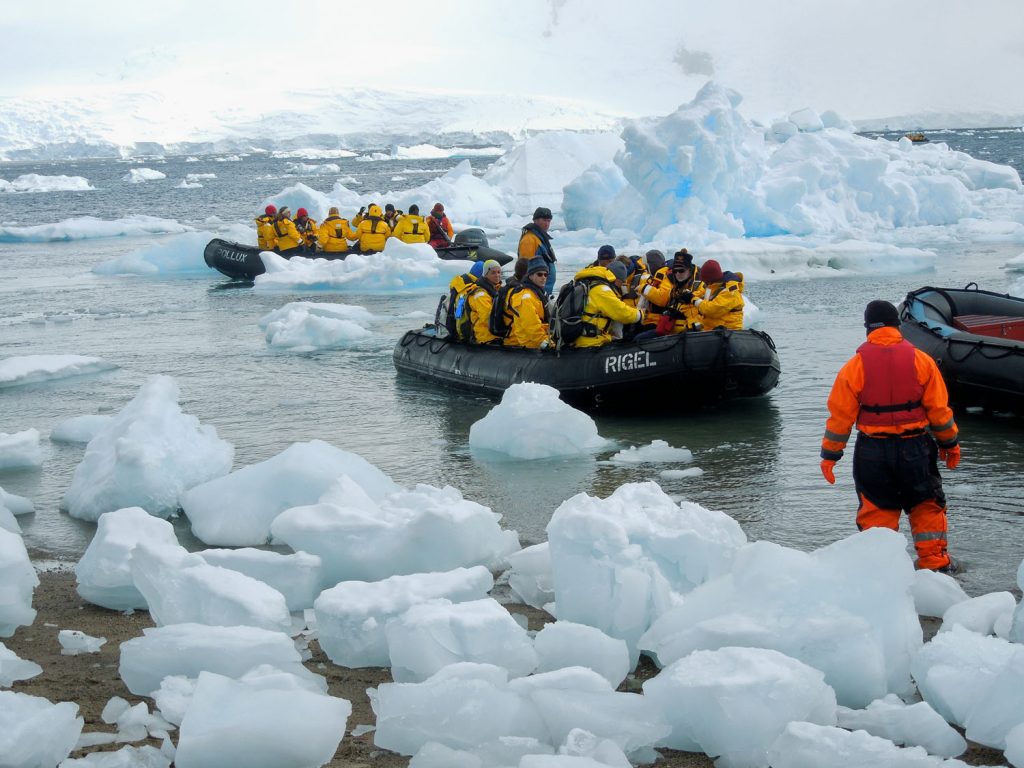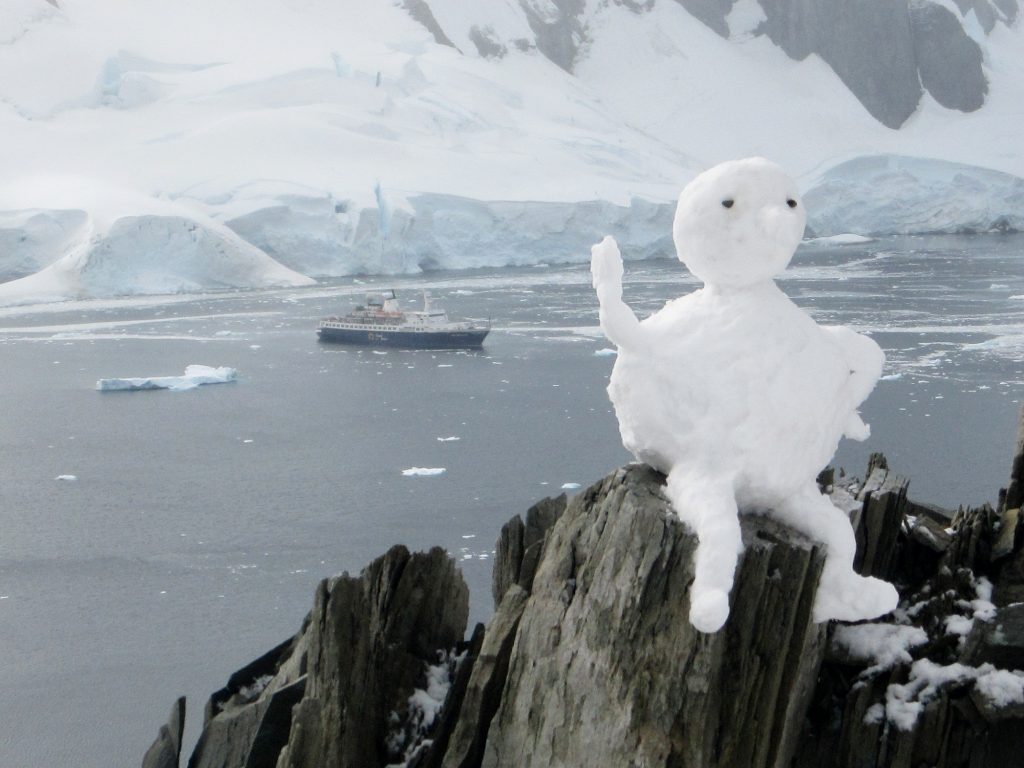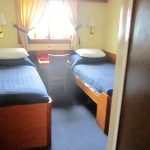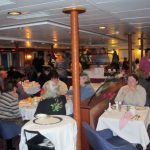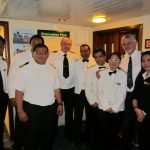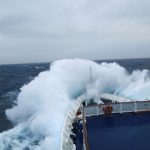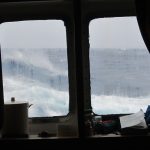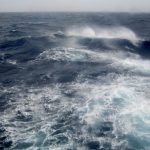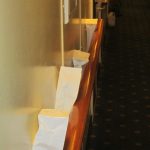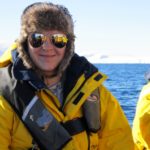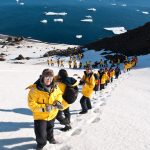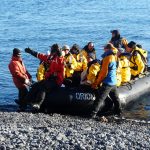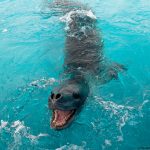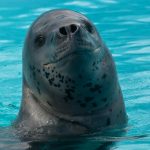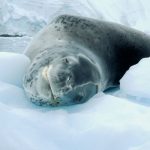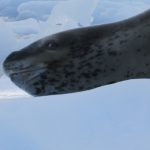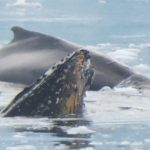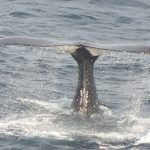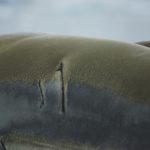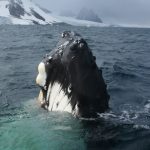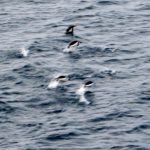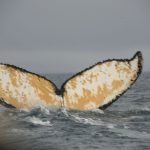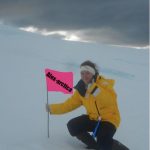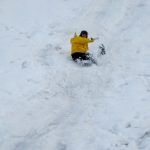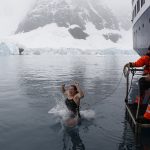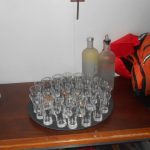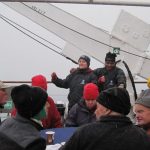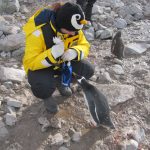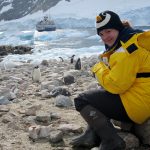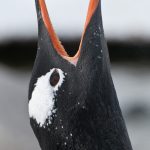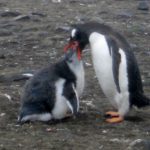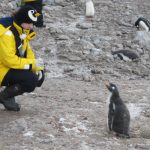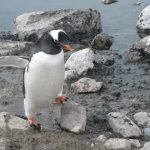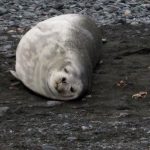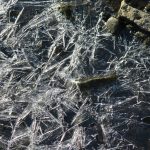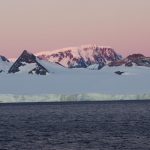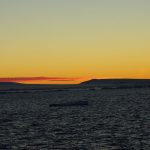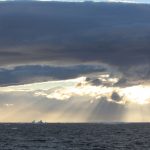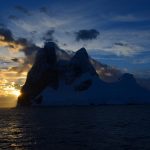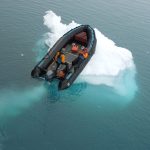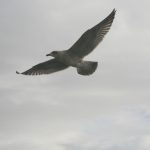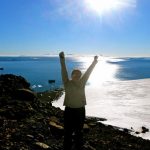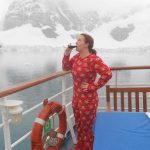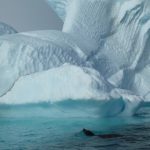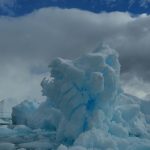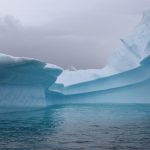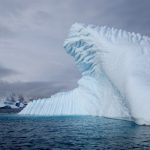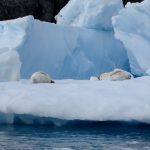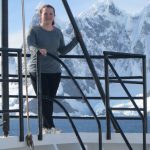
Antarctica: Our Final Frontier
Antarctica, the final frontier. These are the voyages of Lisa and Alex. Our life long mission: to explore strange new places, to seek out new people and new cultures, to boldly go where we haven’t gone before.
After our first visit to Europe in 1987, Asia in 1998, Africa in 2001, Oceania in 2005, South America in 2008, Antarctica would be our final continent.
I did a lot of research of the various companies that go to Antarctica; I chose Quark Expeditions. I don’t see this itinerary offered right now but I booked their “Antarctic Explorer: The Classic Adventure”:
This expedition offers the perfect chance to discover the best of the Antarctic Peninsula, the last continent’s most northern region. You’ll be delighted by penguins, seals and seabirds as they accompany you on your journey along the Antarctic coastline. Landing on the continent itself is a memorable highlight, where you’ll explore the iconic sights that make this one of the world’s most pristine, exotic and unforgettable natural environments.
In brief:
-
- Perfect for first time visitors to Antarctica.
- Witness and explore the highlights of the Antarctic Peninsula
- Be aboard one of Quark’s specially designed ice strengthened vessels
- Learn about the environment and wildlife from onboard lecturers and specialists
- Witness the abundant wildlife – penguins, elephant seals, whales and more!
We would be leaving from Ushuaia, Argentina, the southernmost city in the world. There are things I wanted to see here, a visit to the glacier and to Tierra del Fuego Park so we arrived early. It was going to be a very long flight, so I also planned some days in Santiago, Chile before we were due in Ushuaia. Our flights were through Buenos Aires, so we also spent a day there on the way home.
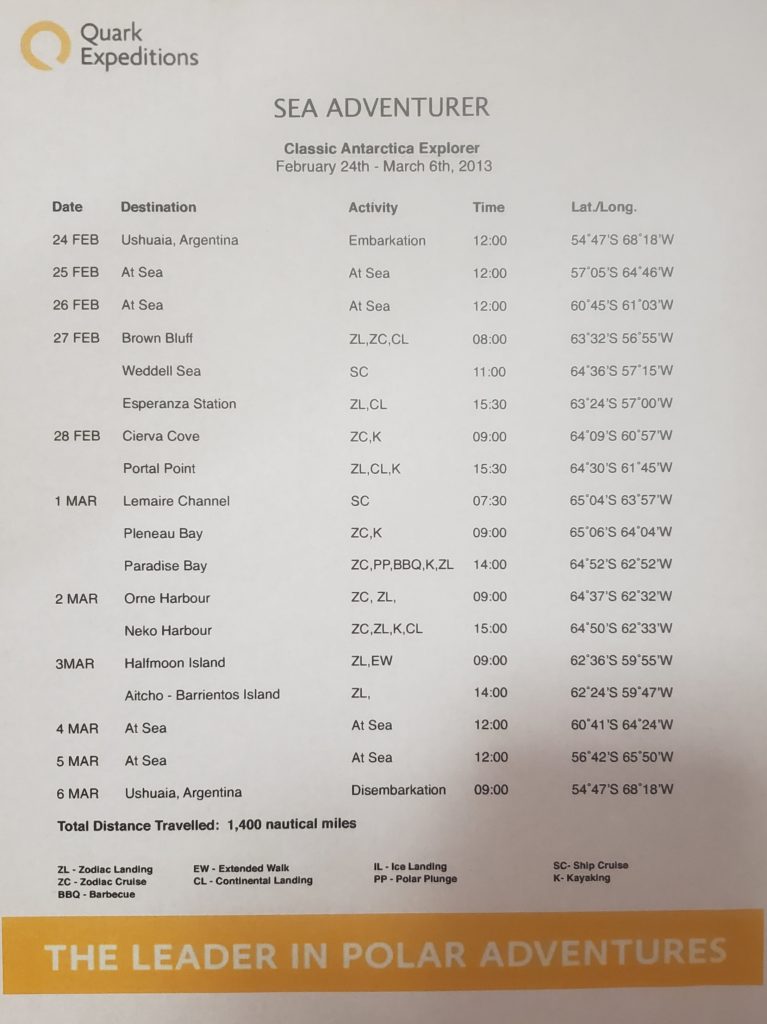
Sea Adventurer, Antarctica Trip
Sunday, February 24
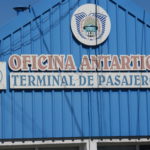
We boarded the ship early evening; catching a bus from where we all met at the port.
The ship can hold 122 passengers but we only had about 110 on board. We also had 72 staff members. Our expedition team was Solan, Krystle, Danielle, Laurie, Mike, Jamie, Jimmy, Santiago, Phil, Ryan, and our expedition leader Alex McNeil. This group included multiple Ph.Ds in marine biology, history, ornithology, and other fields, plus photographers, guides with specialties in polar expeditions, and more. Each day, the expedition team provided briefings on a variety of topics.
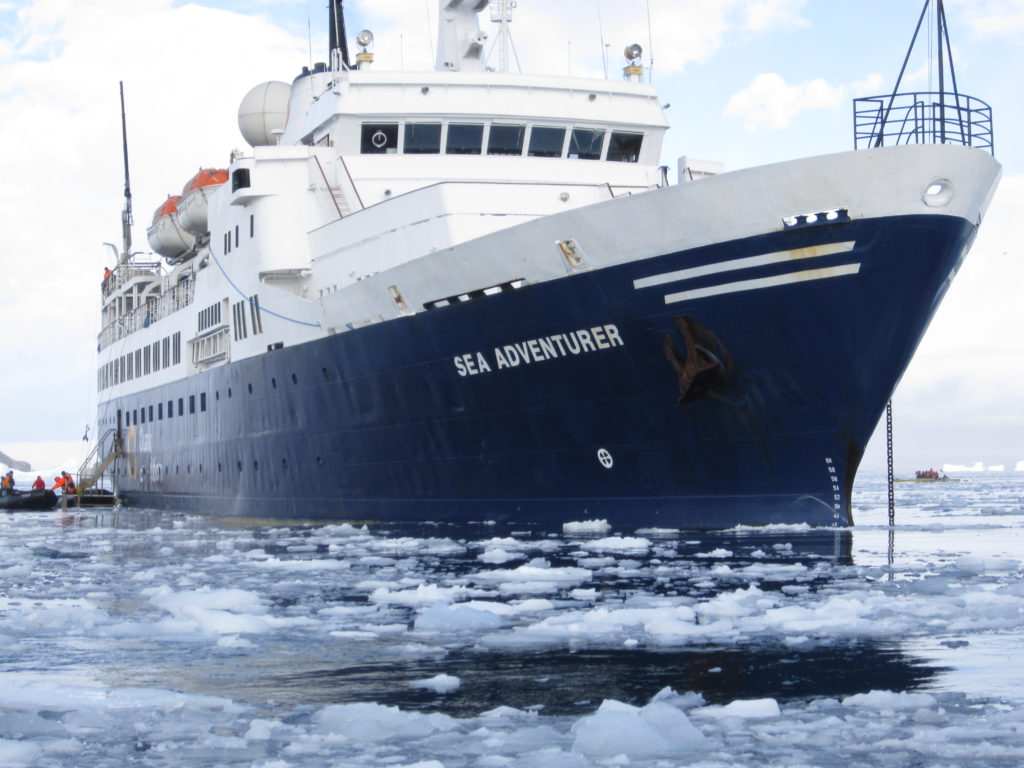
Alex said she expected all retirees, but there were a large variety of ages among the passengers. There were many Australians, plus some US and British, and a few other nationalities. Not many people as young as Alex but there was one boy in high school with his parents.
Before the ship left the dock, we had a safety presentation in the lounge where all the crew introduced themselves. We went out on deck for a life boat drill.
After all that was complete, we departed the port. Within the first hour they announced complimentary drinks; we had them on deck to enjoy the sunny evening.
We had a nice cabin on the second deck, cabin 226 on the port side by the departure deck, small but bigger than I expected actually. We had two closets so we could unpack; since we were on board for 11 days it was nice not living out of a suitcase.
There were a large number of viewing decks and places to enjoy the scenery and wildlife all over the boat. They had a great lounge, a large bar in the front of the boat where we had all our presentations, and another bar back by the large dining room at the stern.
We also had a library where I started “The Worst Journey in the World” by Sisley Cherry-Garrard about the last Scott expedition after finishing the “The Endurance: Shackleton’s Legendary Antarctic Expedition” that I had brought with me. They had a large number of travel and history books. We were also welcomed to visit the bridge, observe the Captain and officers navigating the boat, and invited to ask them any questions we had.
Every day we had a new itinerary. We were told it could change because “every expedition is a new one” and they take different opportunities for us as possible. Our first night we sailed through the Beagle Channel, then were in open water, with no visible land around midnight. While sailing our first evening, we saw sea lions and albatrosses and a great variety of other birds.
Tomorrow, presentations were scheduled on whales, albatrosses, the geology of Antarctica, the discovery of the continent, and seals.
Monday, February 25 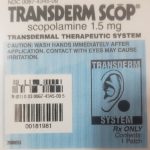
Today and tomorrow will be spent crossing the Drake Passage, considered to be the roughest seas in the world. I visited my doctor prior to the trip to ask for the seasick patch. I wanted to get some for Alex, who, despite her love of roller coasters, bungy jumping, and more, has gotten motion sick in the car. She said she didn’t need it. I am very glad I had mine. The Australians said they couldn’t get those at home for some reason and told me I was lucky. They did have a large bowl of seasick pills always sitting out at the main desk, and there were seasick bags everywhere “just in case”. They did say the weather was supposed to be clear and calm but also told us that did NOT indicate the passage would be smooth.
Alex woke up early and went to the lounge to do some work. Because we were going to be gone so long, over 3 weeks, Alex had promised her boss to try to get some work done so bought a very expensive internet access card.
We had breakfast together. Their kitchen is staffed with 5-star chefs. We had a incredible broccoli Bleu cheese soup for dinner. Breakfast was equally delicious. Alex told me she was planning on eating really “light and healthy” during the trip but loved their crispy bacon, so much for that plan. Then they had a huge cheese spread for lunch.
Alex said she was excited about “rough seas” but started feeling very nauseated. She said “I take back wanting rough water” then took a seasick pill. Walking down the hallways and across the rooms people were staggering and falling all over the place even with “calm water”.
This morning we had our first briefings. We had one from the the ornithologist about albatrosses and petrels. Alex was bored, but enjoyed the next briefing, even taking notes. Laurie Dexter, our Scottish historian, led us through a history of Antarctica and who discovered it “first.” Laurie is definitely a good story teller and made it all very intriguing.
We must always remember with gratitude and admiration the first sailors who steered their vessels through storms and mists, and increased our knowledge of the lands of ice in the South. – Roald Amundsen
Jimmy gave a presentation on whales. He very obviously loved his job and his excitement transferred to the passengers. Then we had one on geology and one on seals. Alex went to the room to lay down, since she was still not feeling well, plus the seasick pill had made her tired.
During the geology presentation, I learned that the Mediterranean Sea will be gone in 250 million years, so take that cruise now. Australia continues to move north and will be touching India again, “soon” in geological time. I think the movement of the tectonic plates is very interesting.
We learned about the leopard seal, the only animal that has killed a human in Antarctica. It can grow up to 4 meters. Named for its spots, we had the opportunity to see this animal and its sharp, sharp teeth many times over the next couple weeks.
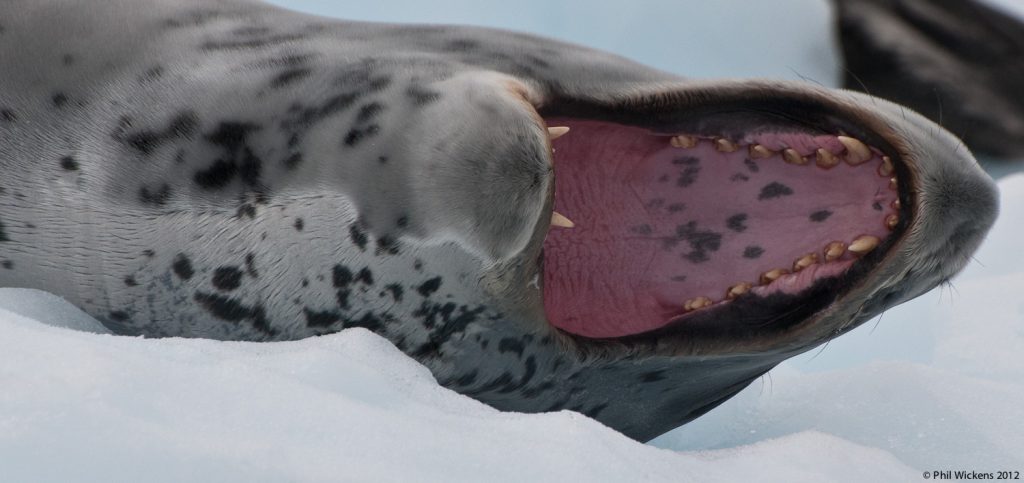
Tuesday February 26
Our expedition leader, Alex McNeil, woke us every morning with an announcement, “Good morning, ladies and gentlemen. Good morning”, then would tell us the itinerary for the day. We got the greeting every morning.
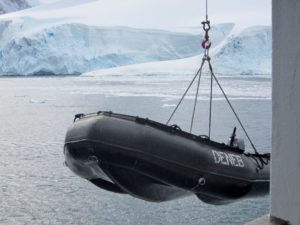 Our first morning we had a mandatory briefing about IAATO, International Association Antarctica Tour Operations, and our Zodiac trips. IAATO has very strict regulations on both the visitors and cruise lines allowed to visit. Alex was disappointed to learn we can’t touch or feed the animals, despite that same rule with all the national parks we’ve visited. They told us what to expect with our Zodiac trips, and covered the rules and procedures; we will be using Zodiacs to go to shore.
Our first morning we had a mandatory briefing about IAATO, International Association Antarctica Tour Operations, and our Zodiac trips. IAATO has very strict regulations on both the visitors and cruise lines allowed to visit. Alex was disappointed to learn we can’t touch or feed the animals, despite that same rule with all the national parks we’ve visited. They told us what to expect with our Zodiac trips, and covered the rules and procedures; we will be using Zodiacs to go to shore.
Besides the morning wake up, the crew also used the PA system for announcements about meals, reminders on presentation, and wildlife sightings. Today they announced we had spotted our first iceberg. Alex and I went up to the deck.
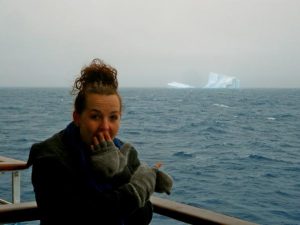
It looks so small but we had a presentation about icebergs from Phil. He encouraged everyone to get a gin and tonic and look at the ice and how 90% of it is underwater, same for icebergs!
They also announced whale sightings. The first ones spotted were humpback whales directly ahead of the ship. Soon after we saw a fin whale and its calf.
After another amazing dinner that night, they had a reception in the lounge so the passengers could meet the captain and officers. They offered a champagne toast to our trip and we spent some time getting to know our fellow passengers.
Half the fascination an Antarctic expedition possesses is to be found in the sharpness of the contrasts experienced during its course, for it appears to be true that a hell one day is liable to make a heaven the next. – Raymond Priestly
Wednesday, February 27
We arrived at the continent today! We were woken this morning at 0600 with an invitation to come up and see the sunrise. What a beautiful start to the day.
We dressed for our first Zodiak trip. The day prior we had to have anything we wished to take, like backpacks or other bags, cleaned by the crew so we were not taking any seeds, bugs, other foreign substances ashore. We were all loaned boots the first day to keep in our rooms and we all had bright yellow Quark coats as well. The boats are loaded by preassigned groups, all named for explorers. We were part of the Scott group.
We had a 5 minute trip to shore. We are ON Antarctica! Our first stop was Brown Bluff, an exposed section of a glacial volcano. This is the first time they were able to visit this season; ice caps have been blocking the channel but it just started moving last week. We had a perfect day, clear blue skies, light wind. Phil and Laurie were leading the group that day and hiked up the glacier. Looking down, we had great views of the bay, our landing spots, the ship. Amazing. It was fairly warm, certainly warmer than an Illinois winter. The area is mostly lava and we saw hundreds of gentoo and Adelie penguins.
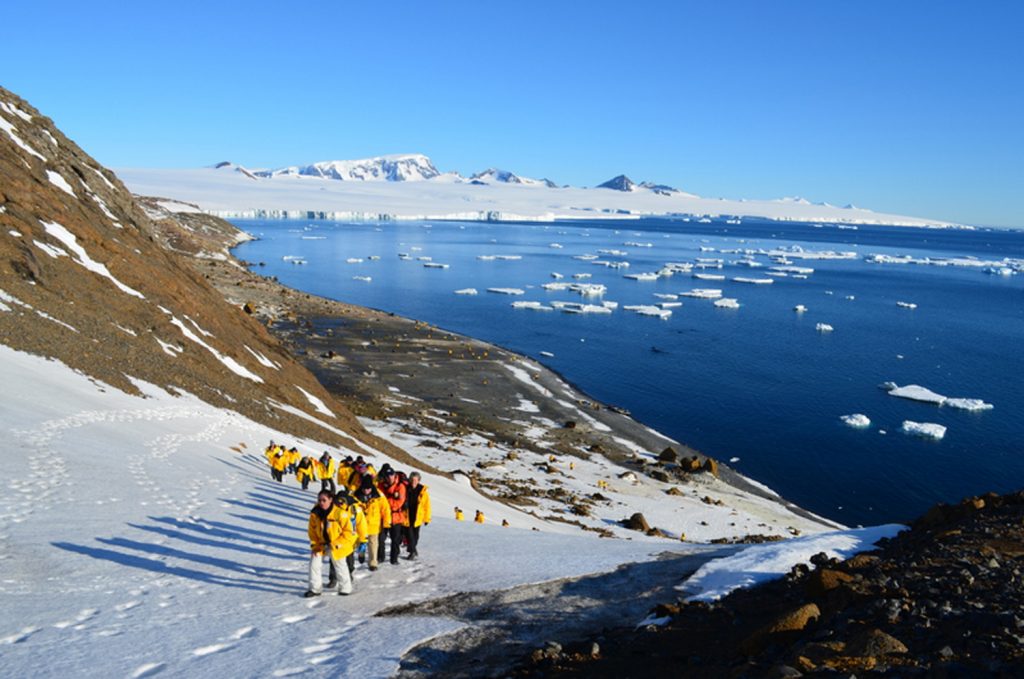
The penguins were at the end of their molting season, so most of them were just standing around. They move as little as possible for almost a month until complete. We are supposed to stay 5 meters away from the animals. However, if we stay still, and animals wander up to us, that’s allowed. Alex sat on a rock and watched them swimming in the ocean for quite awhile. They swim like porpoises and jump out of the water and play around. Alex was a huge Mr. Popper’s Penguins fan as a kid but, needless to say, everyone was entranced with these charming birds.
We cruised around the bay to look at the ice and look for wildlife. The only animal we saw was a leopard seal. It was lying across a large rock, mostly ignoring us but did seem to wave goodbye to us with its flipper when we left.
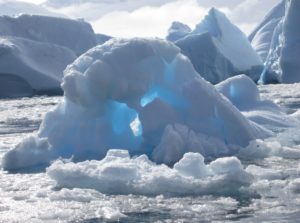 The ice caps are beautiful because of the deep blue color, almost glowing. Older ice is more blue because it’s absorbed more light. Some ice is also able to absorb more light, and deeper into the ice, which makes it bluer because the reds and greens in light are absorbed. Probably not explaining that like a scientist would, but regardless, it is stunning.
The ice caps are beautiful because of the deep blue color, almost glowing. Older ice is more blue because it’s absorbed more light. Some ice is also able to absorb more light, and deeper into the ice, which makes it bluer because the reds and greens in light are absorbed. Probably not explaining that like a scientist would, but regardless, it is stunning.
Returning to the ship we were served another delicious meal and waited for our next excursion that afternoon. We were heading towards Weddell Sea, but the ice was blocking us. We went to Hope Bay next, where the Argentinean Base Esperanza is located. Santiago, one of the expedition team, had previously been stationed there and radioed them and asked if we could have a tour.
It is a small base, so we went in two groups. We were part of the second group. They have approximately 70 people living there year round. There are houses, a school, hospital, social hall, and a church, as well as the scientific lab buildings.

They had a monument for 3 scientists that had lived through a severe winter in just a stone house they built themselves. It was very impressive they survived. They had a mini-museum, and artifacts documenting the first few years since they established the base in 1952. It was very interesting to learn about how they survive there. I’m sure it makes it easier with their satellite dish.
There were a lot of Palau penguins around the area, they’re very used to people because of the nearby base and would get extremely close to us.
I have come to the conclusion that life in the Antarctic Regions can be very pleasant. – Scott, at the end of the Discovery expedition
Great God! this is an awful place. – Scott, about the South Pole
Thursday, February 28
Overnight, we were in an Antarctic hurricane. Winds were over 100 knots. On the Beauford scale of wind, it goes from 0-12. 0 is obviously extremely calm, with no wind and 12 is when winds are over 60 knots. We were at 100! Fortunately they knew the weather was moving in and we were in a sheltered area.
That morning, before our first excursion, we saw humpback whales hanging out around our boat. Laurie also did a presentation about three explorers that were stranded at Hope Bay. Later, we had a morning Zodiak cruise through Cierva Cove. Indescribable, even the 100s of photos we both took don’t do it justice. Amazing.
This morning was a photographers dream. The weather was foggy and cloudy, but it changed frequently so the light was always changing and making every turn, every angle new and different.
The water was a deep navy blue. Ice was everywhere, reflected a turquoise blue (like Caribbean water), making a beautiful contrast. The icebergs all have different textures varying from completely smooth, jagged, bumpy, long striped grooves, spotted. And they can have every type on just one ice cap. No one is completely sure what creates the various textures, but it’s a mixture of wind, melting, the water, contact from other ice caps, animals, etc. We saw a couple amazing arches. It’s almost hard to believe they’re not man-made.
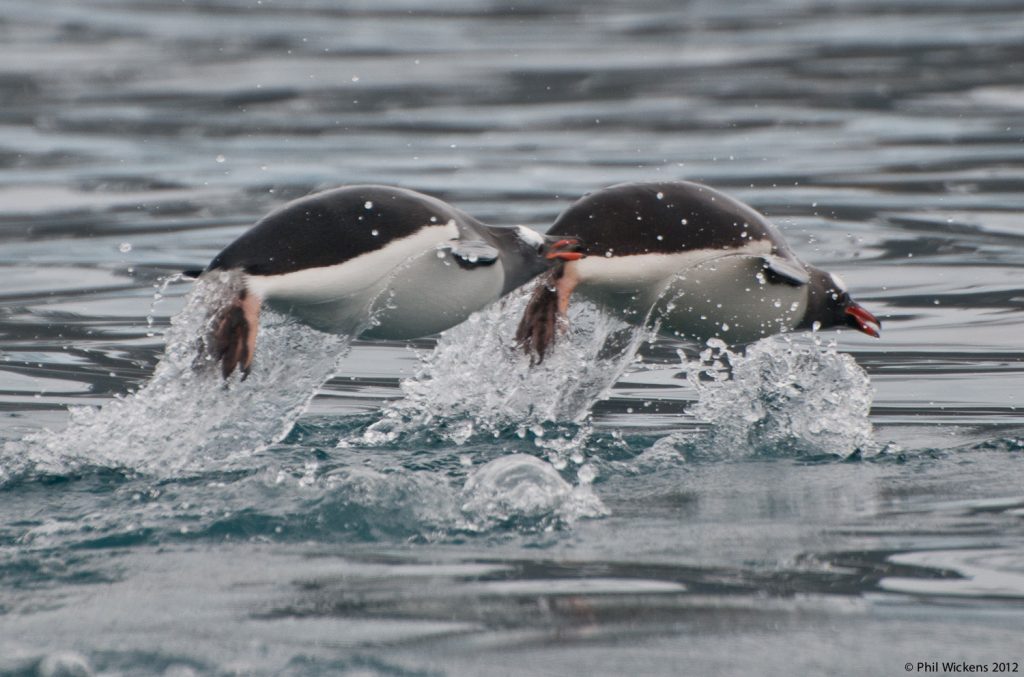
While on our Zodiaks, we didn’t see more whales which was disappointing, but we did see a group of penguins swimming by. Their movements are so much fun to watch. They jump out of the water like dolphins, almost synchronized. We saw a group of about 15-20 swimming by.
We also saw leopard seals. There were quite a few of them. Besides being very aggressive they are usually solitary animals. This group of seals were just laying around on the ice, quite calm though. There were red marks all over the snow, we learned that was their excrement. There was one especially large seal. Even Jimmy, our expedition leader that day, was impressed. It was about 12 feet long and perhaps 5 feet wide.
We also saw crab-eater seals. They don’t actually eat crabs, but the first time they were hunted, and they were cut open the hunters thought that crab was inside of them, but it was krill. We saw a number of seals with marks on their back, scars from attacks by other animals.
That afternoon we made it to Portal Point. It’s part of Charlotte Bay, which is on the Redus Peninsula. Continental Antarctica again, our third time. Alex McNeil told us that it’s rare to make it to the continent, so we’ve been very lucky with the weather.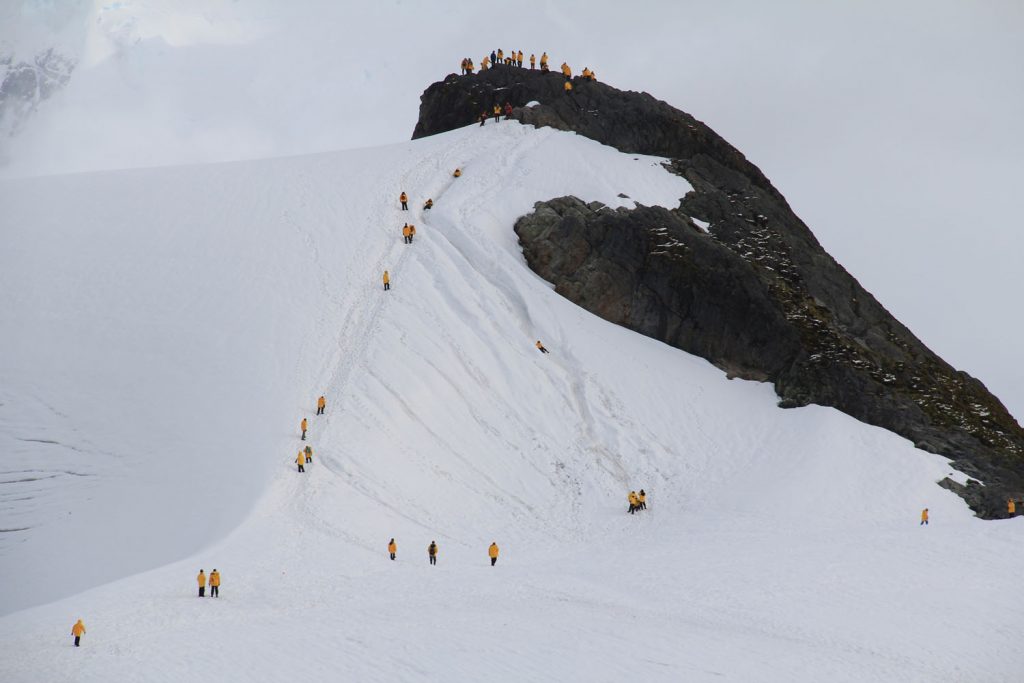
Arriving on the shore we hiked about a mile up the glacier. It was much colder and more windy than the hike at Brown Bluff. It was incredibly beautiful though. Pure white, wind swept snow, large crevasses. The weather was still cloudy and constantly changing with the light. Again, it made for amazing photos that will never be able to truly capture what the experience was like.
On top of the glacier, we just took in the breathtaking view of the glacier, the water, the mountains. Alex wrote “I felt so small, in this vastness. It was simply stunning to be in this beauty that’s been basically untouched by humans. So rare.” We had a fun afternoon, Alex made a snow angel then did a headstand, we had a snowball flight, and both of us used some of the flags on the path for claiming Antartica as our land. We returned the flags to mark the safe route.
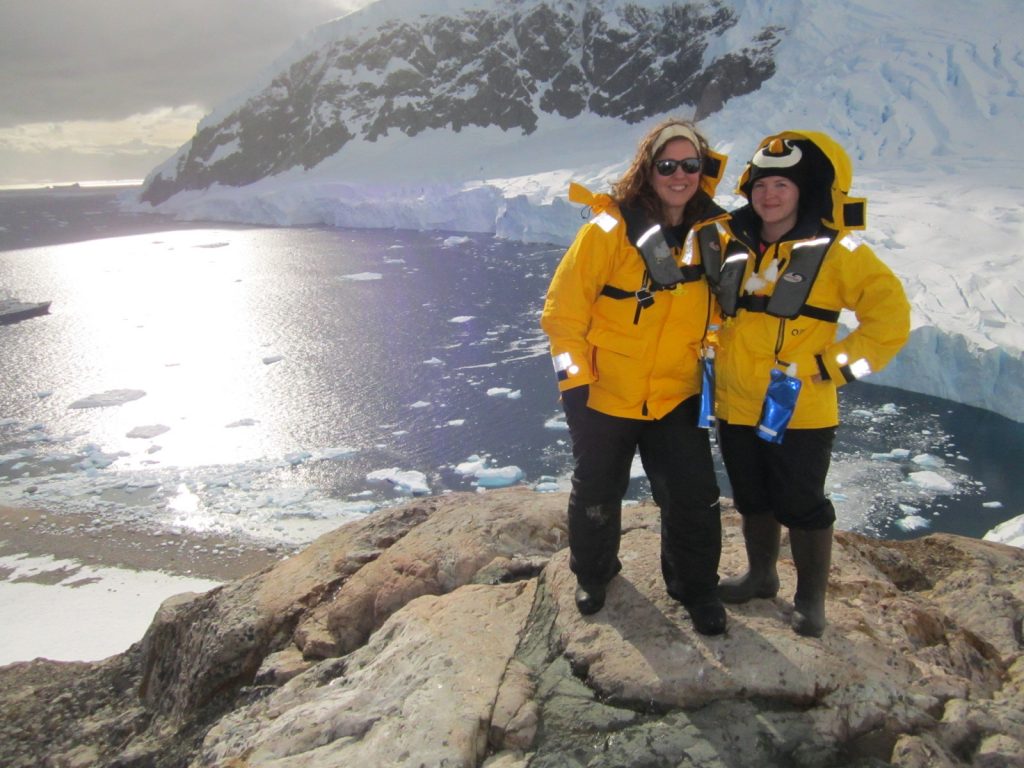
Hiking back to the shore, we wandered around the rocks while waiting for the zodiac to take us back to the Adventurer. Back on the boat, we were told that we could see 3 humpback whales. We ran up to the deck, and they were literally along side the ship. So close, we could have jumped on them.

We had our daily recap and briefings from the expedition team, as always they were interesting and full of knowledge. Each of the guides would give highlights of the wildlife viewed that day and Alex McNeil informed us of our progress on the map and what they are planning for the following day. Often we would get some presentations, too. With all the Ph.D’s on board it’s like a we are getting a free college class. I definitely didn’t think we would be learning this much. Alex told me learning should always be this fun and interesting. I agree.
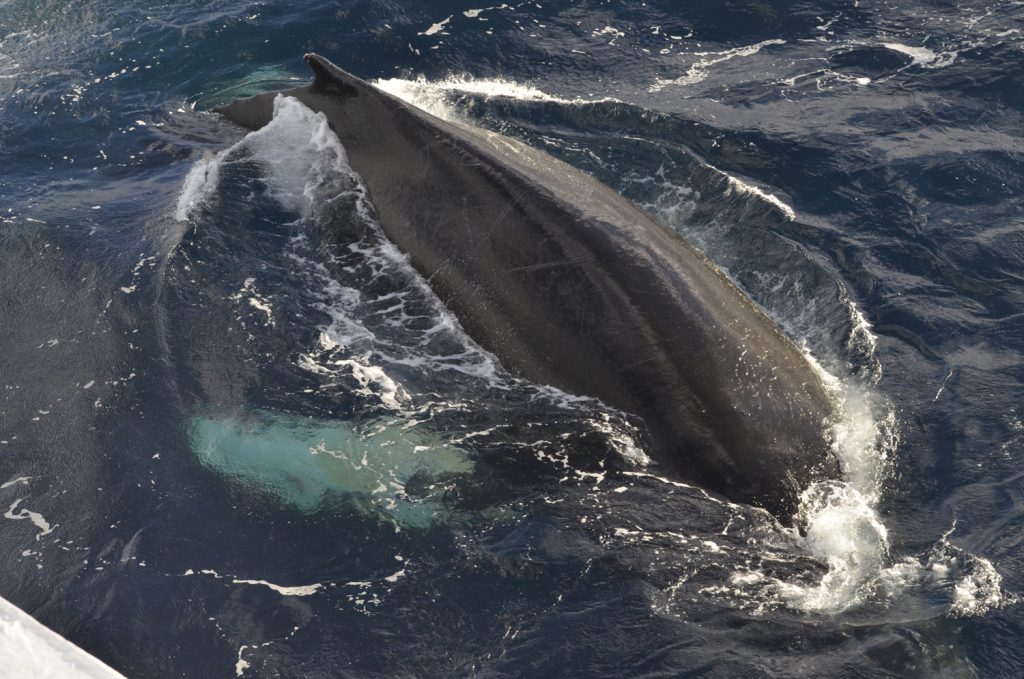
It was like visiting Disneyland, Las Vegas and Mars simultaneously. – Victor Boyarsky
Friday, March 1
This morning we visited Pleneau Bay, nicknamed the “iceberg graveyard”. The icebergs drift into the bay and, because of the currents, are unable to go elsewhere. Absolutely incredible. We have truly been lucky with the weather lately. We were unable to do any shore landings, but we did almost 2 hours of zodiac cruising.
We were with Mike today, and he did a great job of taking us to the right place at the right times. We cruised around looking at the icebergs, and saw a few minke whales. It’s just amazing to see them so close. We saw some leopard seals; one popped his head up around our boat several times because he was curious. He was so close we could have reached out to pet him. Both of started laughing about Buster in Arrested Development, loose seal, loose seal! This type of seal could definitely take off your hand. The other zodiacs began to come into the area and Mike decided to take us elsewhere.
It seems to be so much easier to see animals without too many boats around. Away from the others, we saw a few seals swimming along so headed their direction. While we were waiting, over a dozen crab-eater seals swam by the stern of our boat, then 4 minke whales went right by the bow. It’s cute to see one seal swimming along, but to see that many all feeding and following food was amazing. Being that close to the whales also gives you a much better understanding for their size. All the passengers were absolutely delirious with excitement. Alex said she understands the staff’s excitement about their work.
After that thrilling encounter, we cruised around, saw a few more whales and seals, and hundreds of birds, so many varieties. We saw some green and red icebergs, covered in various algae. A bright pop of color among the black, white and blues.
As we were going back to the boat, we saw a couple minke whale fins, and stopped the raft. There were three of them and they were very curious. It’s wonderful when animals interact and are inquisitive about us. They swam under our boat and basically touched the sides.
After lunch, we arrived at Paradise Bay. Landing at Almirante Brown Base, we hiked up another glacier. It was really steep and so beautiful. But the best thing was sliding down. The boots, waterproof of course, could be very slick and our guides suggested sliding back down. It was perfect, like a luge. I laughed all the way down. Alex loved it so much she hiked back up to “sled” down again.
Then after that, we sailed around in the Zodiaks, looking at the glaciers, brilliant colors, the wildlife. It’s so hard to describe it but every view is amazing. We saw birds, ice calving off glaciers, whales and more seals.
When we got back it was time for the Polar Plunge. Alex had packed her suit and was first in line at the spot we loaded the Zodiaks. Krystle was in a Zodiak off to the side to take photos of everyone. Alex was the first passenger to jump. She said she was nervous but didn’t want to chicken out, so as soon as she got harnessed in, she made the leap! I could tell by her face it was pure shock, of course, surrounded by glaciers and icebergs it was not going to be comfortable. Each person was offered a shot of vodka after being pulled from the water. She changed clothes then came back to watch the rest of the crazies.
After all the plunges, we had an Antarctic BBQ on the deck. Sitting on the deck enjoying the food, it started to snow. So lovely. Sitting on a cruise ship in Antarctica, eating grilled hamburgers, rum punch, dancing, while it was snowing, I love travel.
Antarctica is otherworldly, like nothing I’ve ever seen before. Stark, cold, beautiful desolation. – Mark Hoppus
Saturday, March 2
This morning we were supposed to stop before breakfast at Useful Island; the crew said it is amazing, but hard to get to because of the weather. We’ve had a lot of luck with weather so far, but there was heavy snow and we had to miss that landing.
After breakfast we stopped an Orne Bay, and did another hike. This time we got to see chinstrap penguins which are adorable. They nest really high on rock which is why we haven’t seen them yet. They were cute, except they were really dirty because of all the mud and covered in their red poop. We also got to see a couple fur seals that were hanging out on the shore.
We visited Neko Harbor in the afternoon; there are hundreds of Gentoo penguins covering the area. It’s impossible to stay 5 meters away. There is a rookery here and there were all ages and sizes of penguins. Many of them were building their nests so it was fun watching them waddling around looking for sticks and the perfectly shaped rock. Some of them became really curious as to what all these yellow jacketed people had to offer for their nests and would start pecking at our boots and jackets. They were especially interested in the cords hanging from our coats.
Alex and I both sat still and let the penguins approach us. I have a photo of Alex here being poked at by a penguin who was curious about her. The smile on her face, the sheer joy, and the cute penguins make this one of my favorite photos ever of my daughter.
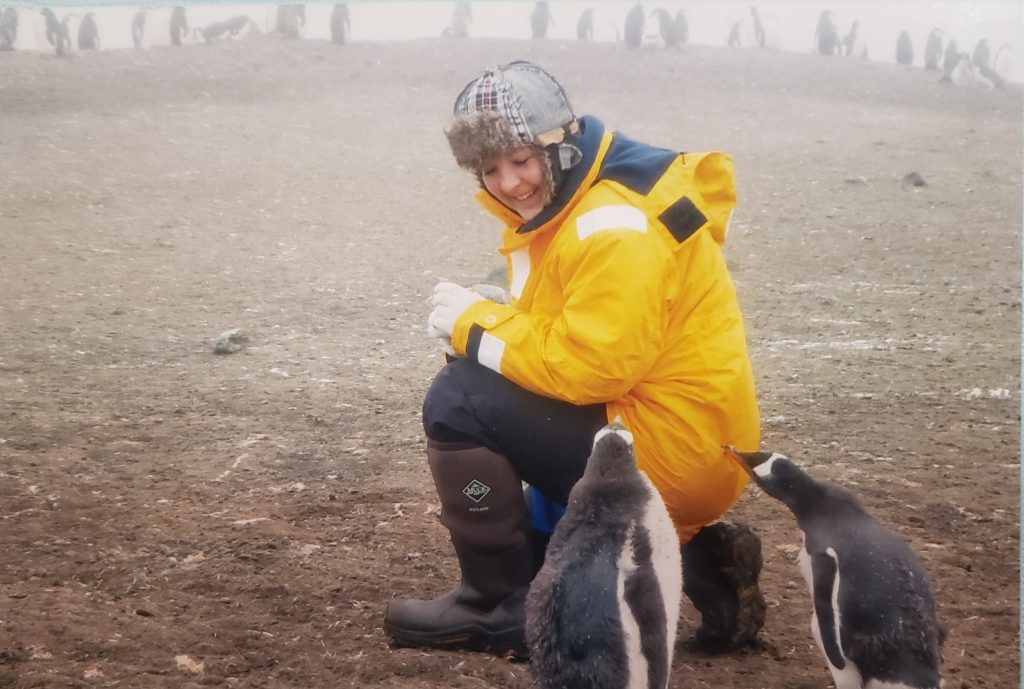
This was definitely a great place to really experience the penguins. We saw a ton of the chicks feedings. They peck at their mommas until the exasperated mother regurgitates their meal. Penguins were cuddling, and sleeping, and swimming, and eating, and sliding down the hill…. truly magical.
We hiked up the hill for a beautiful view at the bay. It’s a great spot to see the glaciers calving. I got to see it happen twice.
On the hike up, there was also a great spot to look at the entire penguin rookery area. Alex decided this was a great spot for ‘The Penguin Song’. She wanted to sing and record it for the camp she worked at then, Y Camp Abe Lincoln in Davenport. Danielle, one of the expedition team guides, certainly enjoyed the show as did I. I showed this at work for the next year, too.
That evening, we had a fun photo show with Krystle, where people could submit their two best photos and we all talked what we had seen on the trip.
The land looks like a fairytale. – Roald Amundsen
Sunday, March 3
Today was the last day for excursions. We visited the South Shetland Islands, stopping at Half Moon Island. They gave us the option of doing an extended hike, hanging out on the shore, or doing a zodiac cruise. We wanted to do every one of them but we heard that only one person had signed up to do the cruising with Jimmy (Alex called him “the whale whisperer”) and we decided to join them. All of our experiences have been great, but I love being on that little boat speeding along with the wind and the water, so close to the penguins and seals and whales.
It ended up just being 4 of us on it, including Jimmy, a great experience itself because normally there are 8-10 people on the boats. The weather was a lot darker than it’s been for us, so it had a really cool gray, moody color, with bits of light shining through. The sea wasn’t calm either, so that added to the ambiance. I got some amazing photos of a dark grey sky.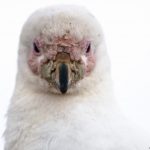
We cruised around and came across some fur seals that were swimming in a small secluded spot. It had lots of rocks for them to play and lay on. We watched two seals playing and pushing each other off one rock, almost like they were playing king of the mountain. Very cute. They’re so much more interesting than the other seals because they can actually support themselves on their flippers. A few others swam around our boat to check us out while we were watching them play, only fair, we were watching them so they watched us.
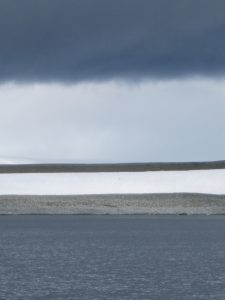
There were lots of small islands and jagged rocks in the distance. Jimmy had never made it out that far, and he wanted to head out that way. We were all happy to explore with him. Alex and I were just happy speeding along the water. However, when we got there, we found a secret animal hangout spot. There were fur seals all over the shore, and penguins all over the rocks, by the seals and up towards the cliffs. There were a number of huge petrels, too. One kept opening his wings, they have an amazing wingspan.
The wind started to pick up; we received a radio alert, and had to head back. The waves were getting much bigger and it was splashing all over, into the boats and on our faces and the wind was super strong. Alex said it made her “feel like a real explorer, finding a new island, and fighting the seas…. to get back to my luxury boat. Close enough.”
Monday, March 4
Heading back to Ushuaia, we made our final stop, visiting Aitcho Island. We had another great interaction with the penguins, the island was covered with hundreds of Gentoo and Chinstrap penguins. It was also a very pretty spot, hilly and green, and very foggy, quite different than Antarctica. Alex sat down for awhile and had lots of penguins nibble at her.
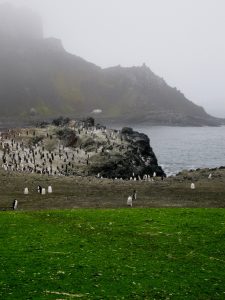
There was also a Weddell seal and two elephant seals hanging out on shore. The two elephant seals were laying on each other and penguins were lying next to the seals, all very friendly.
When we got back, we had a Happy Hour to celebrate our last stop. We had lots of toasts to the captain, the crew, and all the guides. The wind was picking up and the waves were pounding the boat. My patches were still working fantastic, but Alex had two beers and then felt seasick again. She left dinner to go to bed, and skipped the night auction and open bar. I stayed out and enjoyed the activities. Alex slept for about 12 hours, got up, tried eating breakfast, then went back to bed for a nap.
Wednesday, March 6
We were due into port mid-morning. There were several presentations, including a wonderful talk from Laurie, about being part of the Soviet-Canadian expedition that skied from Russia to Canada in 1988. An amazing man and amazing talk.
We had a viewing of the DVD that Krystle made for all of us, photos from all the passengers as well as hundreds of Krystle’s. A wonderful memory of our trip.
If Antarctica were music it would be Mozart.
Art, and it would be Michelangelo.
Literature, and it would be Shakespeare.
And yet it is something even greater; the only place on earth that is still as it should be.
May we never tame it. – Andrew Denton
Our Expedition Team
Alex McNeil, our expedition leader, was a fairly young guy. He was nice and funny and seemed to know everything. Very well organized and always prepared for anything, a perfect leader.
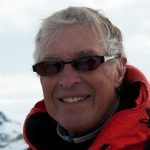
Alex and I both loved Laurie Dexter, he was easily the best presenter. He’s a Scottish historian and a excellent story teller. He had presentations on whaling and the history behind that. We learned about the Narwal. Hunted for their horns, the are where the legend of unicorns came from. He told us stories about the early explorers, Ross, Scott and Shackleton. Laurie also has an amazing life story. He was part of the group that skied from Russia to Canada, crossing the official North Pole. He’s also an extreme runner.
Mike, the Marine Biologist, gave a wide variety of presentations. He taught us about the tides of the ocean, and why they happen and how. He also talked about modern navigation tools on day.
Phil is a geologist and one day he decided that in order to get us excited about it, he was going to have a “Rock of the Day” and a babe modeling on a boulder of the said rock. I think geology can be interesting, anyway, but Alex loved the talks and spotting the “babes” on shore. Usually it was a snow woman posed over the rock. We learned about pylagomite tuff which is volcanic glacial rock and another day we had a detailed talk about granite.
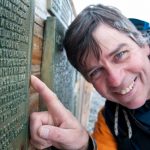
Santiago is an Ornithologist and has some great stories about spending a year at the Argentinian base we visited.
Miko is also a Biologist, originally from Poland. He gave a number of talks about penguins.
Jimmy is the whale fanatic and a Marine Biologist. On one Zodiak cruise with him, he taught us about the “bubble net”. We saw whales using this technique to catch krill in mass. They blow bubbles underwater, while moving in a circle. When the krill rise up, they get caught in the middle. Then the whales can swoop up and get a bunch in one mouthful.
Krystle was our photographer. She would give a tip of the day, how to photograph the ice and wildlife. She also shared some of her photos each day; the animal ones were amazing. She has an excellent camera and a huge telephoto lens.
There were two kayak guides and the onboard activity coordinator.
Antarctica is the coldest, highest, loneliest place on Earth. It is a continent that doubles in size every winter and shrinks every summer. Between the months of April to October, inland temperatures drop to as low as -60C.
Antarctica is home to around 31 trillion tonnes of ice, which, were it all to melt, would cause the world’s oceans to rise by 65m. In some places the ice is 4km deep, which is more than 10 times the height of New York City’s Empire State Building. Beneath the ice cap are thousands of small islands and mountain ranges bigger than the Alps. Despite the penguins, whales and mammals, it is the ice that is truly astounding.
Almost all the above is from a journal my daughter kept. I typed it up for my scrapbook a decade ago so already had it ready. I just stole her notes and took out the first person info she included. Thanks for the great notes, Alex, as I didn’t have this level of day-to-day detail.
